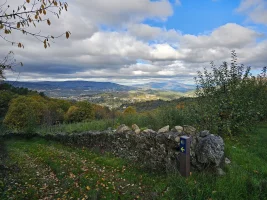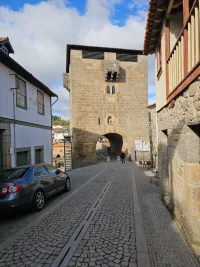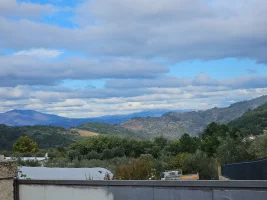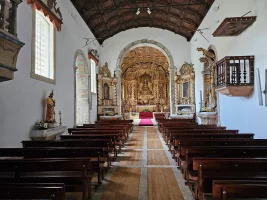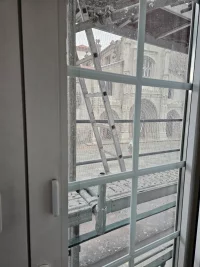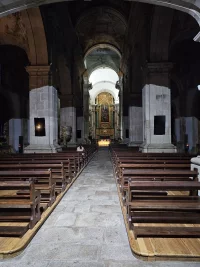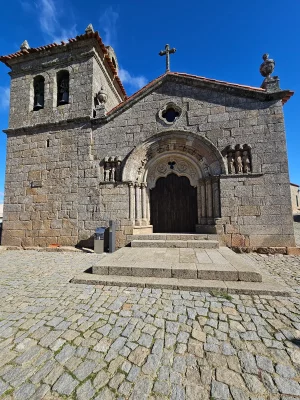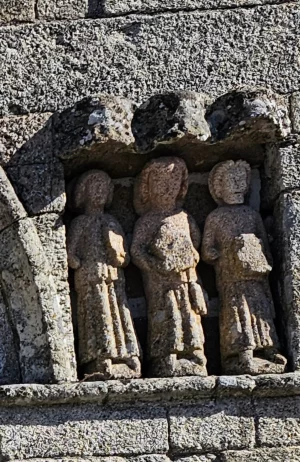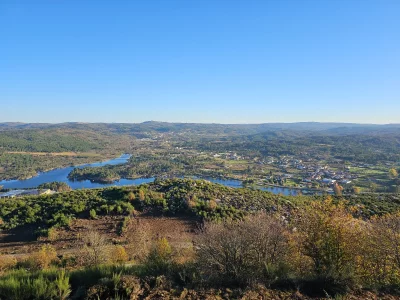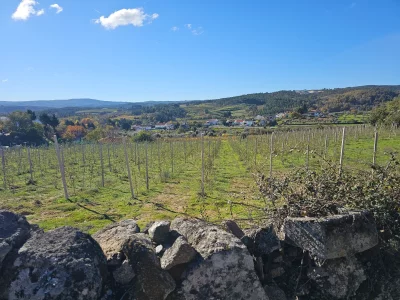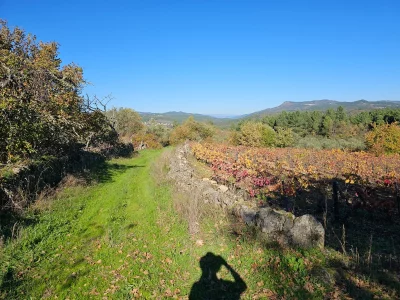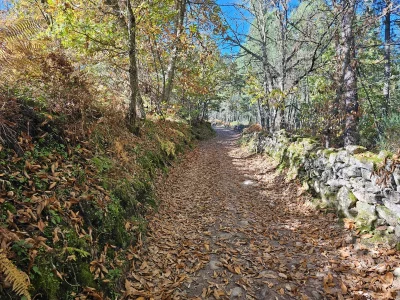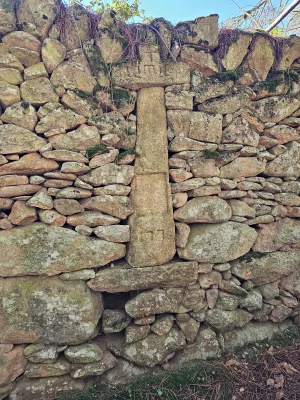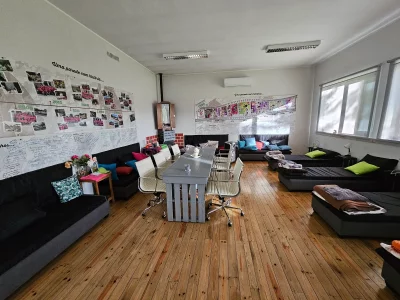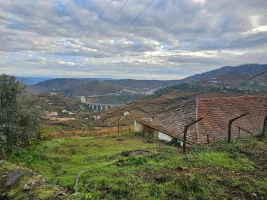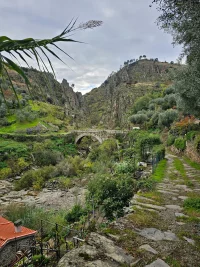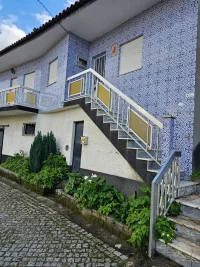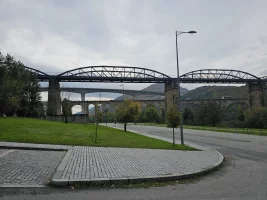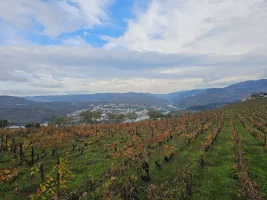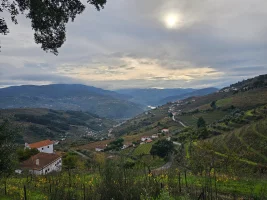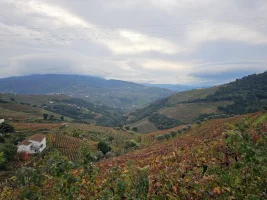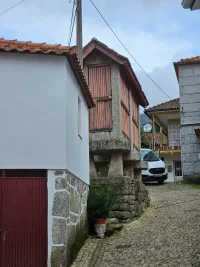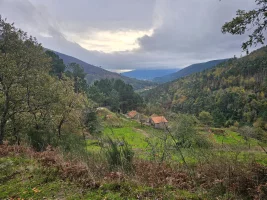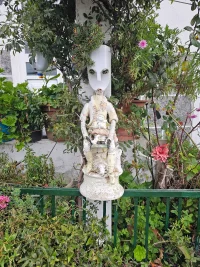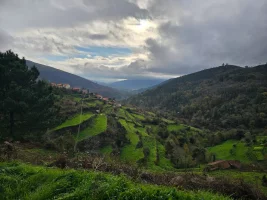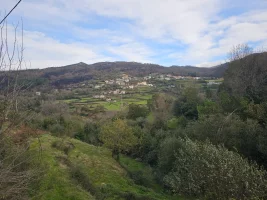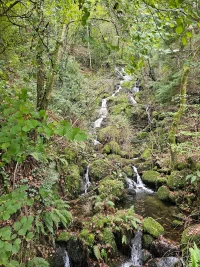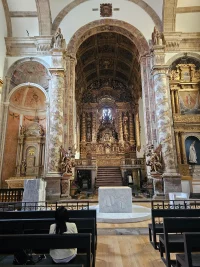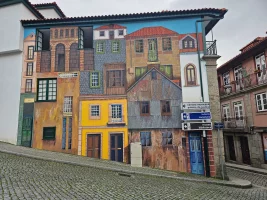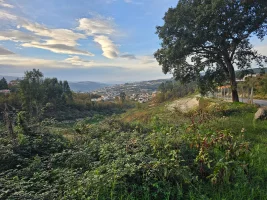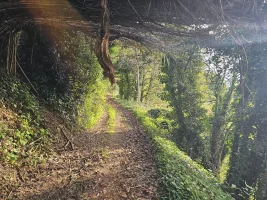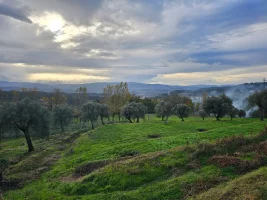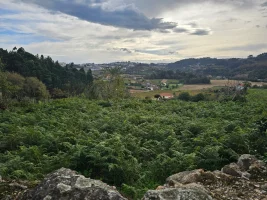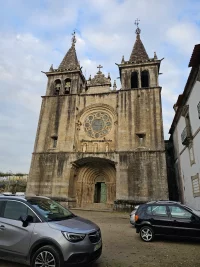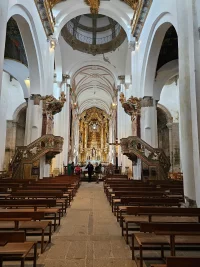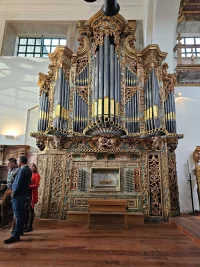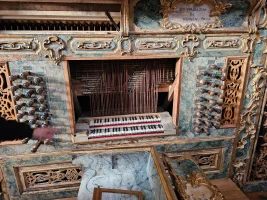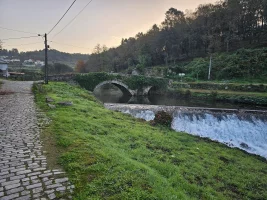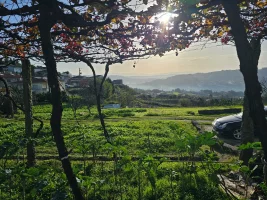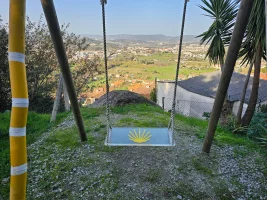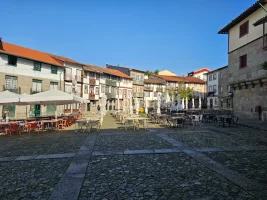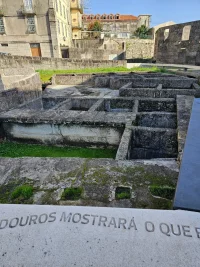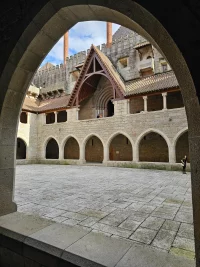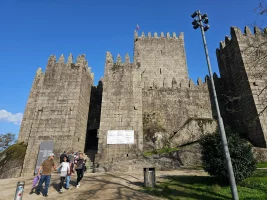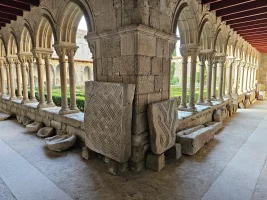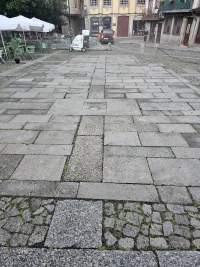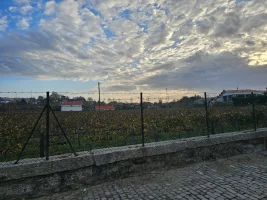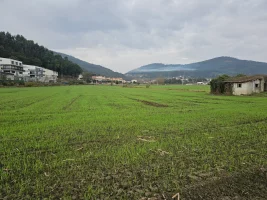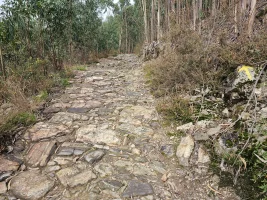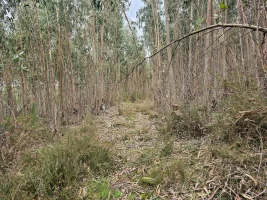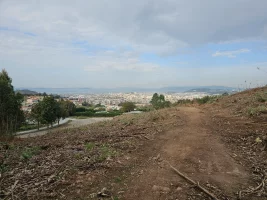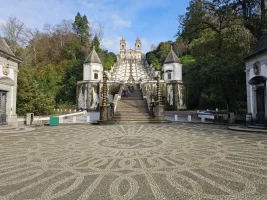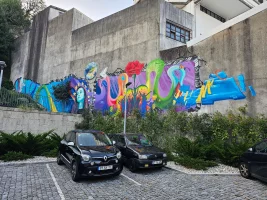Wednesday 13 November 2024 Beira Valente to Lamego
It was a long day today, 27.5 km over 8.5 hours (which did, to be fair, include a stop for lunch). I left at about 7:15 and arrived at about 3:45. There were plenty of climbs and descents (more descent than ascent, but still plenty of steep hills to climb). I think I managed okay. But tomorrow is going to be longer and tougher. I expect I will be able to make it, though.
It was also a cold day today, or colder than usual. I didn't take my puffy jacket off at all during the day, and in the early morning, I also put a spare pair of socks on my hands. My phone said it was 3° at that point. It also got quite windy. When I made my first cafe stop for second breakfast, they had a nice fire going in their woodburning stove. Fortunately, it was not also raining, at least, not until just as I was arriving at my destination. I think there is less chance of rain tomorrow and it is supposed to warm up a little bit.
With all of the ups and downs today, there were some spectacular views that reminded me most of the Salvador and Primitivo caminos I did last year. It is really hard to capture in a photo, though. It is so big that you want to switch to a wide angle lens to get more and more in the shot. But paradoxically, that just makes it look smaller. Sometimes it works better to zoom in.
In addition to things already mentioned (olive trees, chestnut trees, etc.) there were a lot of apple orchards today. A few at the end had apple trees like I am familiar with, shorter and wider. But many of the large orchards I walked through focused on a different way of shaping the apple tree, guiding the growth with poles and strings like a trellis and keeping them tall and very narrow and planted every evenly in very straight rows.
The first real location of note was Ucanha, where there was a fortified bridge (fortified with a tower on one end). Apparently this was built by the local abbot to ensure the successful collection of tolls. You can climb the tower, and I did.
My next stop was Santo António de Ferreirim, where there is a former Franciscan convent. Attached to the convent is another 12th century tower, which had belonged to the family of the nobles who sponsored the convent. When I saw it ahead of me in the distance I did a bit of a double take, worried that the route had circled me back to Ucanha. There were a lot of changes in direction on today's walk, and it was easy to lose track of which direction I was walking in. For €3 you can tour the church and see the 16th religious art commissioned for it. I spent a bit of time doing that. "No hurry" was my motto today.
I stopped again a couple of villages later, in Britiande, for lunch. I was alerted by
@caminka's notes to the presence of restaurants in the village. Since they were a little off the route, I would have completely missed them otherwise. I picked a likely looking one to eat in. When the waitress came to the table, I was told it was pork cheek and mashed potatoes today, was that okay? I don't know if anything else was available (although I think I did see another diner having his pork cheeks with fries). I said it was okay and it was a substantial lunch. I opted for the fruit salad for dessert so that I would have
some fruit or veg. It all came to €10, €9 for the lunch and €1 for the dessert. Come to think if it, the waitress may have just been telling me the daily special and there may have been other options. In any case, it worked out fine.
From there, it was walk the final leg into Lamego. I had booked in a place recommended by others, the Residencial Solar da Sé. It is right opposite the cathedral and I had been advised to ask for a room with a balcony overlooking the cathedral. Such a room was duly offered. When I got there, I could see that my request must have given them a chuckle. That entire side of the building is covered in scaffolding and netting.
I looked up what to see in Lamego. Besides the cathedral (of which I have a sort of a view) there is a diocesan museum and a castle. I looked up the closing times for those (6 for the castle and museum, 7 for the cathedral) and decided to have a bit of a rest before seeing things. Unfortunately, closing times did not exactly match what was advertised. The castle, it seems closes at 5. I got to walk around the castle, but with high winds and rain, I didn't want to stick around too long. The cistern part, which people had seemed quite impressed with, I was told was at another location and was already closed.
Then I went to the Museum. The sign outside said it was open until 6, but at 5:30, all the lights were out inside it. The cathedral at least had an open door. And there were a few people inside as well. But it, too, had almost all of the lights off. And it was clear that the tourist visit package was not on offer at this time.
So I came back to my room. It had been my intention to go out again for a supper, but when the time came I found I didn't really have the appetite or the will to gave the rain. So I just stayed inside and wrote this. Next I will probably have a shower and get ready for bed. I negotiated an early breakfast (included) at 7:30 tomorrow, because time will be of more importance. When I wrote the email address I was given for the albergue in Mesão Frio to ask for a bed tomorrow, I was told (by the Tourism Office who replied) that pilgrims are being housed with the bombeiros (volunteer fire fighters). I asked them to let the bombeiros know to expect me. I want to be sure to arrive tomorrow begore the Tourism Office closes, do they can tell me where to go and reassure me that I am expected.
Photos: scenic vista, tower fortifying the bridge, another scenic vista, convent church (does anyone have a clue how that balcony on the right was to be used?), view of my balcony and the cathedral, inside the cathedral 1.5 hours before closing (it was actually much darker than that, the camera automatically compensates).
Note: back to thumbnails
